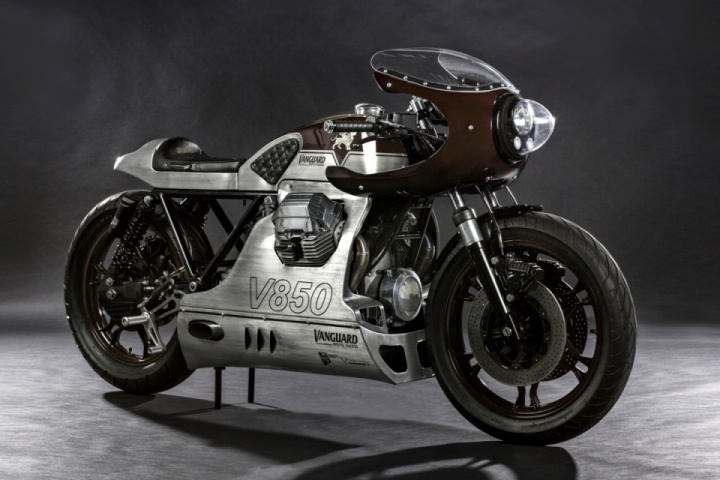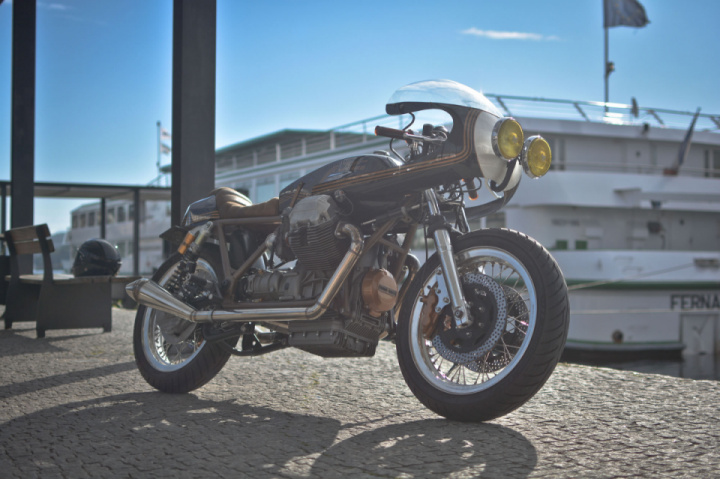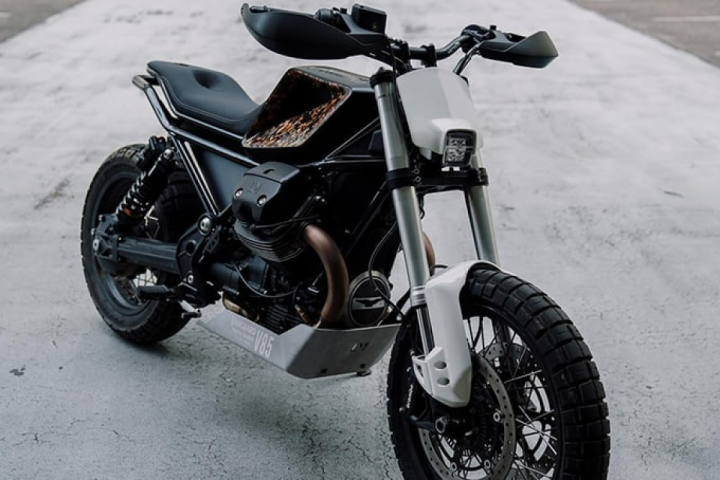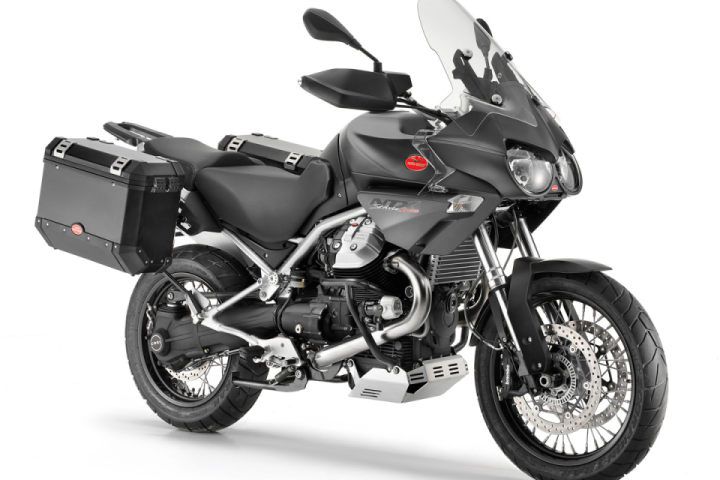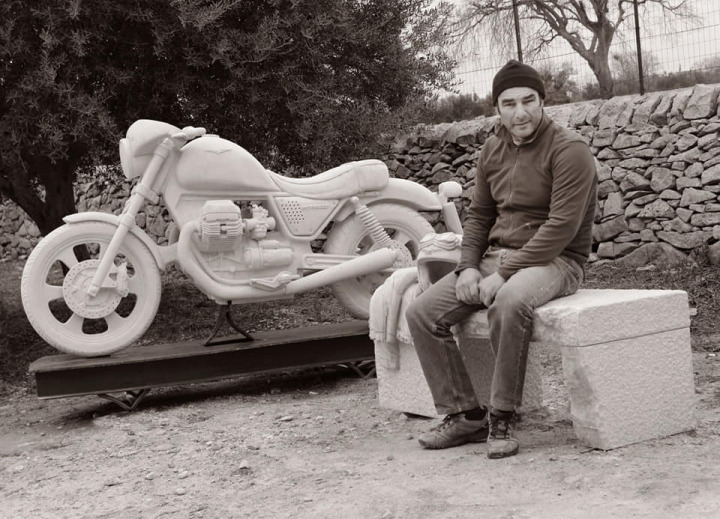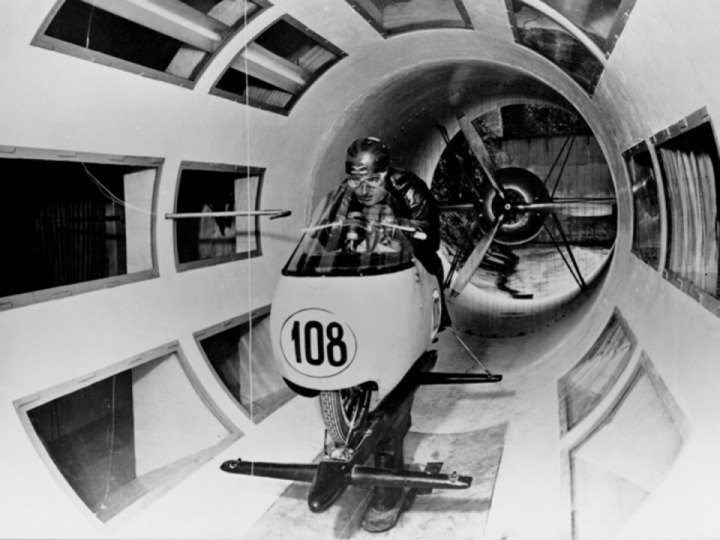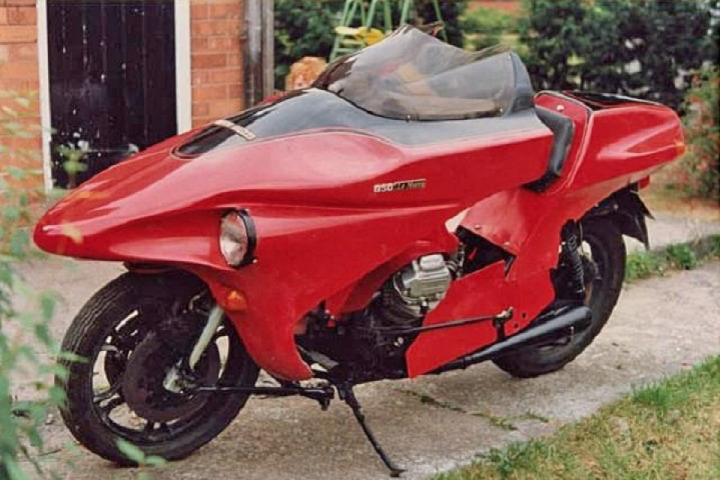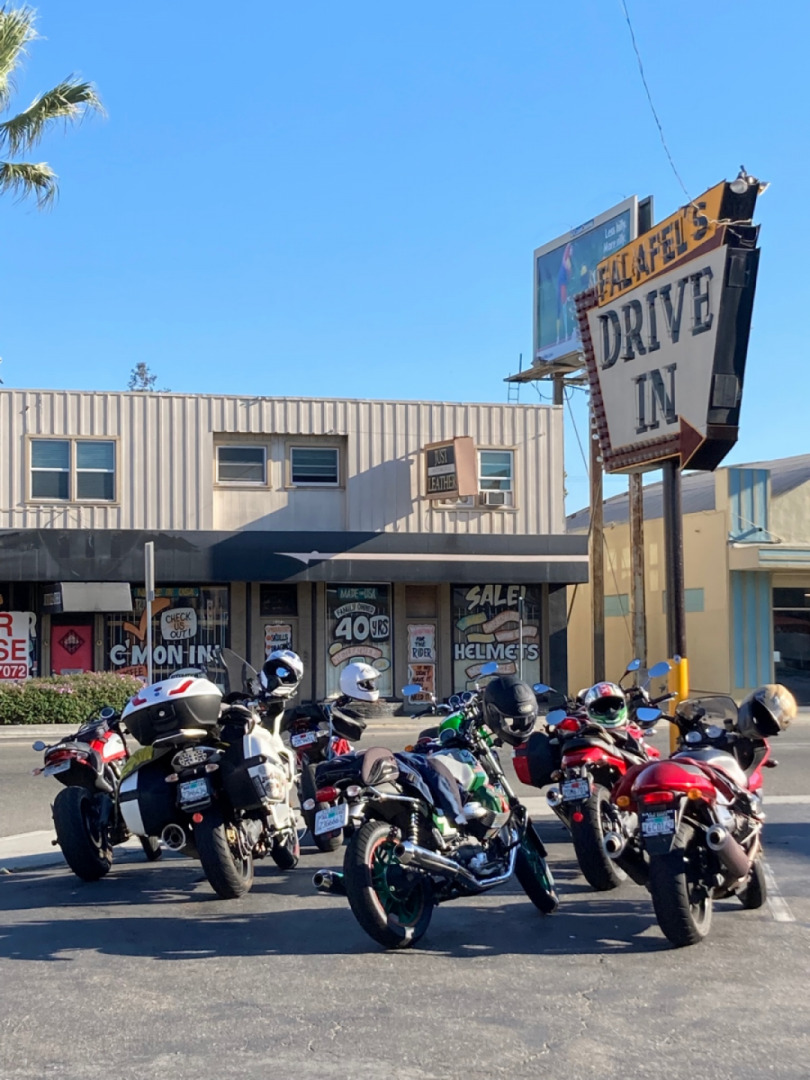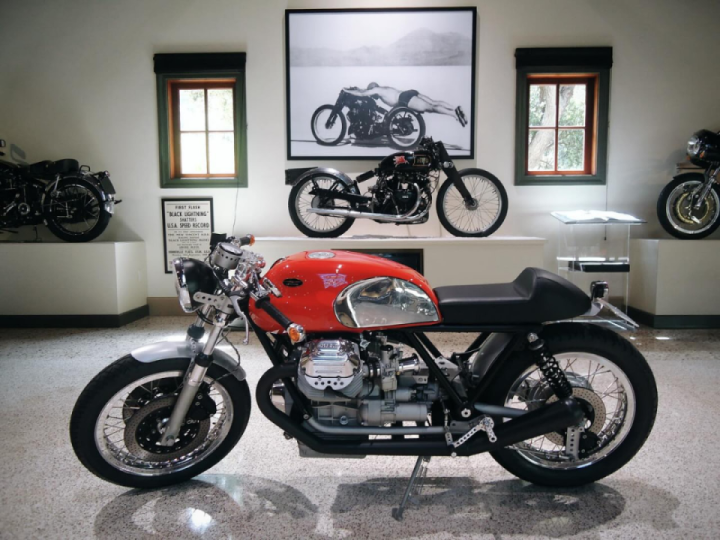
1955 Moto Guzzi 8C “Otto Cilindri”
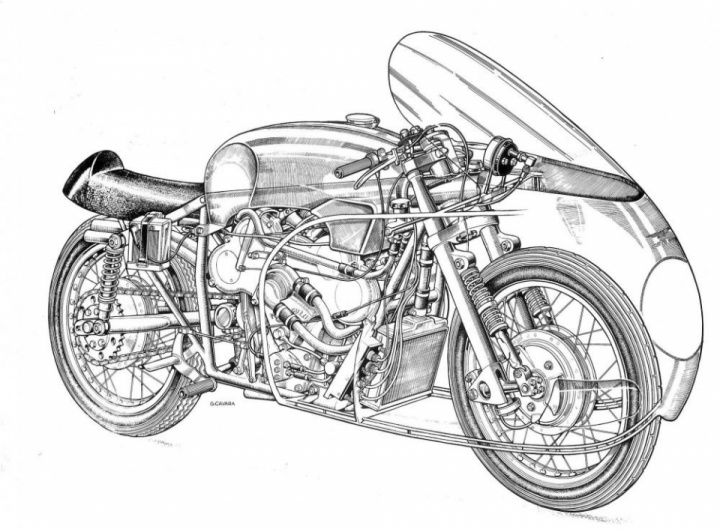
Fans of modern machinery may not understand how Moto Guzzi, with their clunky driveshafts and pushrod v-twins, is allowed even a grudging membership to the sportbike club. Of course, a look back a bit further shows Guzzi was very successful in a variety of racing classes throughout the 40s and 50s. But they wanted to play in the premiere 500cc Grand Prix class with Gilera and MV Agusta, both of whom used inline fours as the basis for their race winning machines. Guzzi knew that, in order to compete without years of development, they needed to try something new that would increase power without increasing weight, and they did it with the “Otto Cilindri.” Long and low, with a period “dustbin” fairing that made it look like a wheeled torpedo, the bike was as terrifying for riders as it was for the opposition.
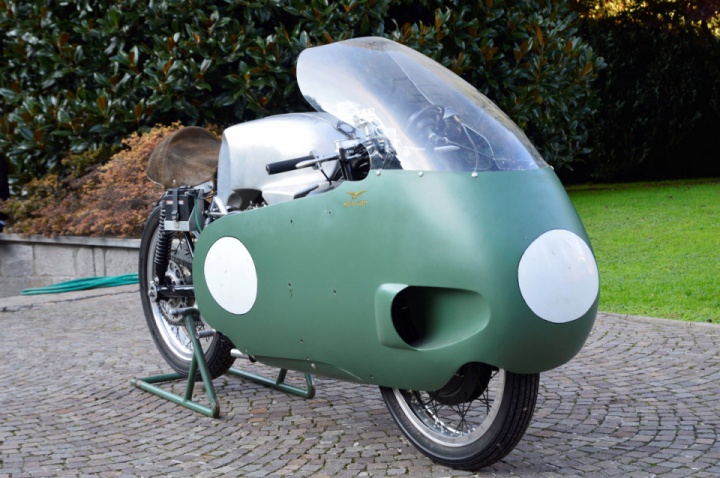
The brand new 500cc Grand Prix machine was powered by a brand new V8 engine… Let’s just stop there and let that sink in for a moment. A motorcycle. Powered by a 499cc V8. That’s not a euphemism or a catchy name. That’s “V8.” As in “has eight cylinders.” It also had four gear-driven overhead cams, eight Dell’Orto carburetors, liquid cooling, oil stored in the frame, and weighed in at 326 pounds with the full fairing in place. If this thing had actually finished a few more races, it’d be in the pantheon of all-time greats. Unfortunately, that’s why this bike is a glorious footnote, instead of an unforgettable masterpiece.

The main issue was that the 78hp produced by the ferocious engine was too much for the tire and suspension technology of the time. The bike was capable of very nearly 180mph, but period testing and races were plagued by crashes, with riders eventually refusing to pilot it until it stopped trying to actively kill them. Which is saying something, since basically the entire sport of motorcycle racing was trying to kill riders during this period. Handling was likely compromised by the engine being set too far back in the frame. This was common practice at the time, ostensibly to increase traction at the rear, but put too little weight on the front for stability and handling. Mechanical failures didn’t help: the bikes overheated and broke cranks with alarming regularity.
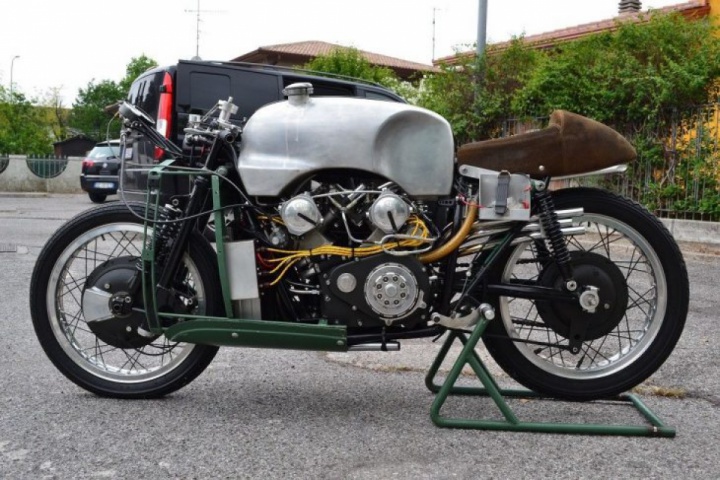
The Otto Cilindri was terrifyingly fast, even considering the mechanical and handling problems: it actually finished fourth and fifth at the 1957 Isle of Man TT, with the fourth-place bike running on 7 cylinders. Considering the ambition of the project, the reliability and handling challenges are no surprise and it is likely that, with time, the bike would have realized its full potential. Unfortunately, Moto Guzzi pulled out of Grand Prix racing in 1957, so this project will always be more of an interesting “what if.”
Article by @raresportbikesforsale
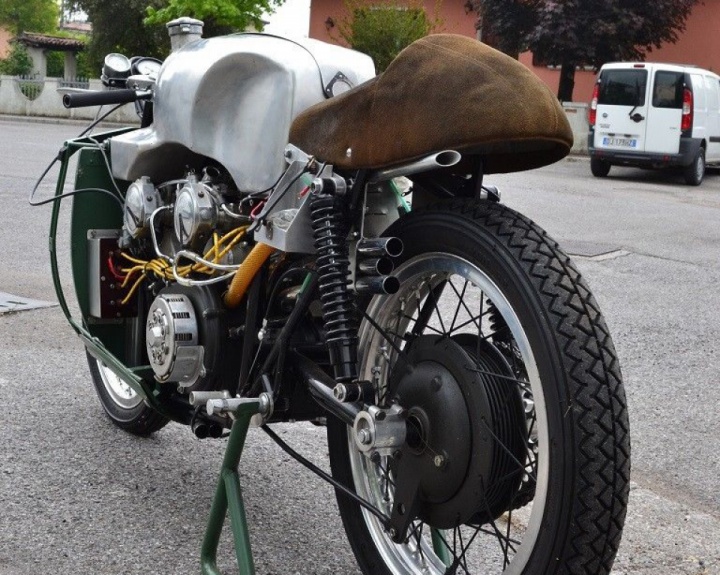
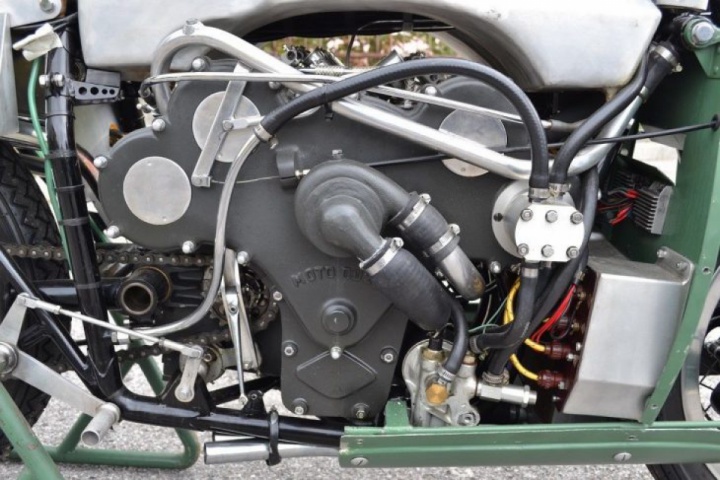
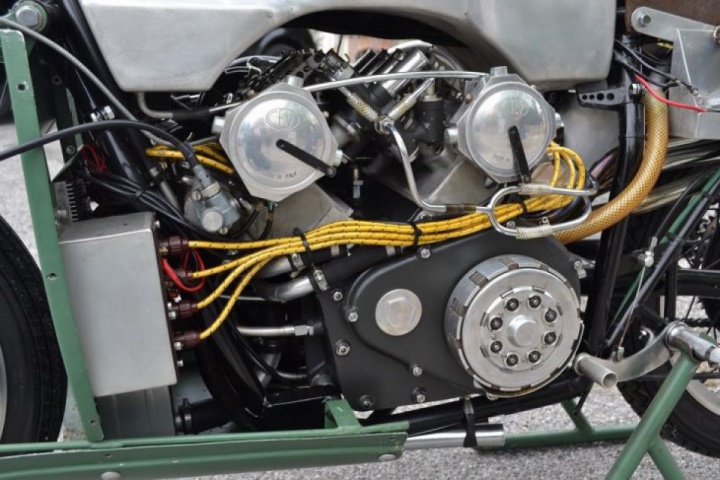
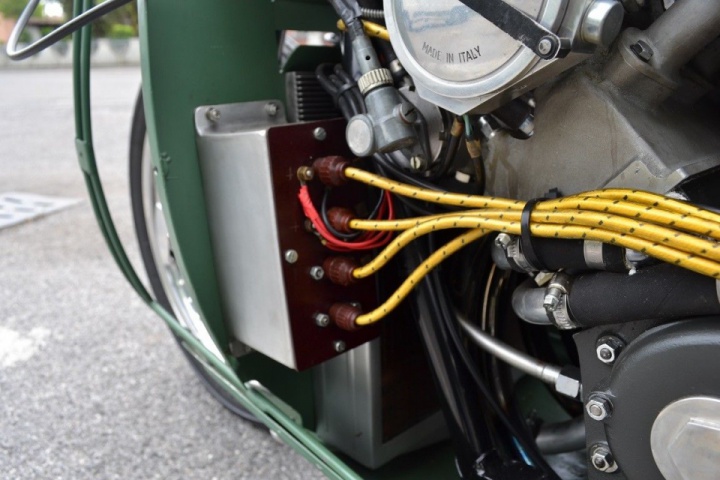
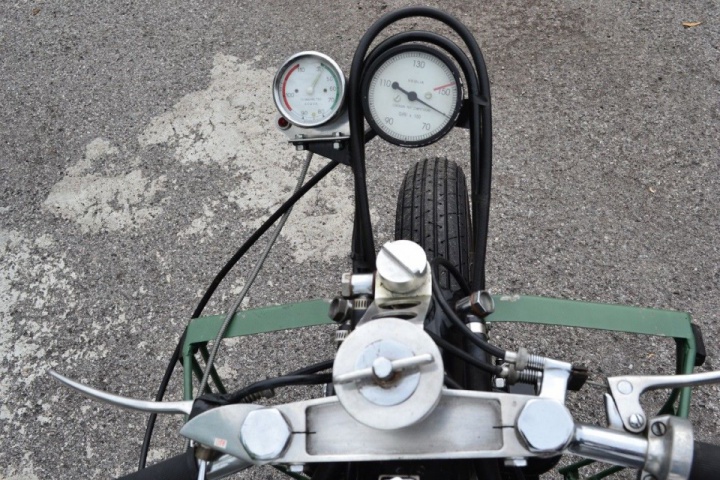
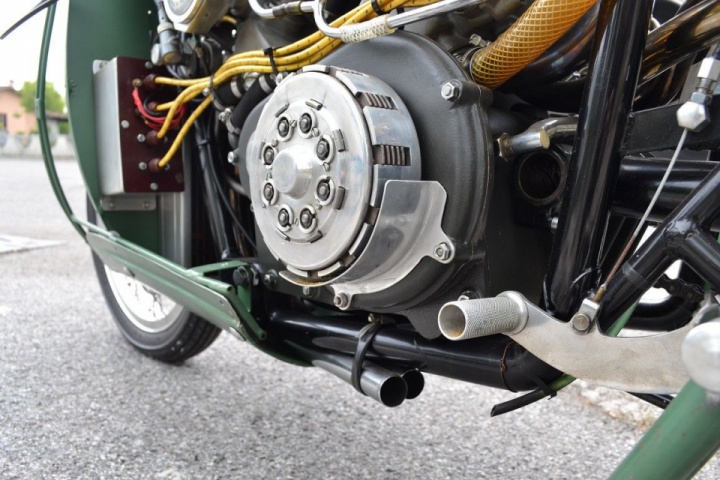

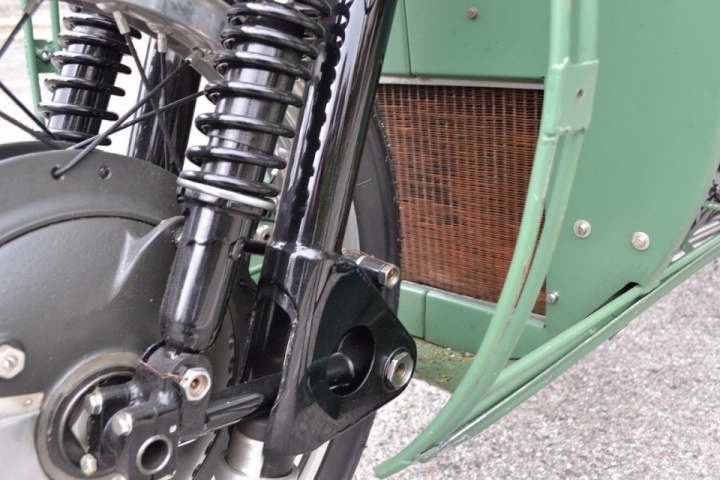
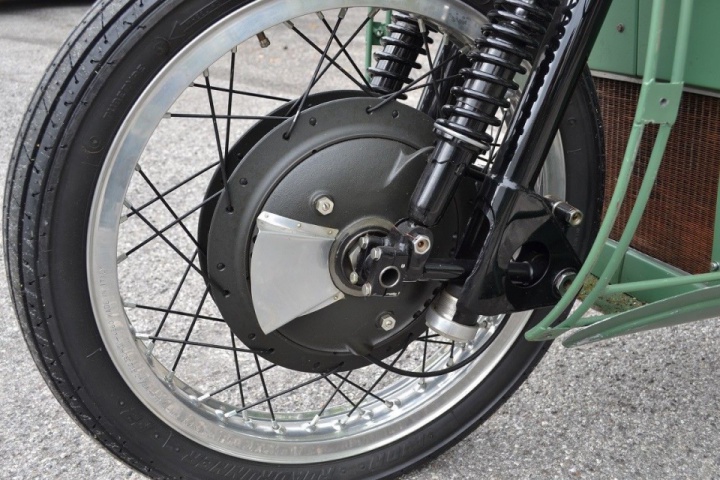
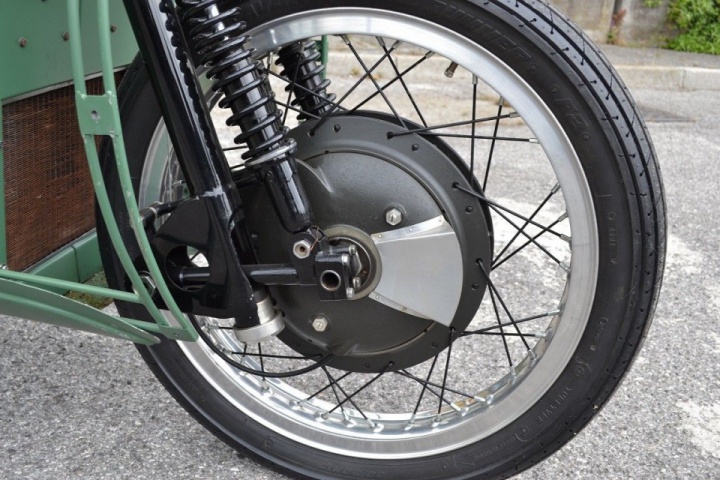
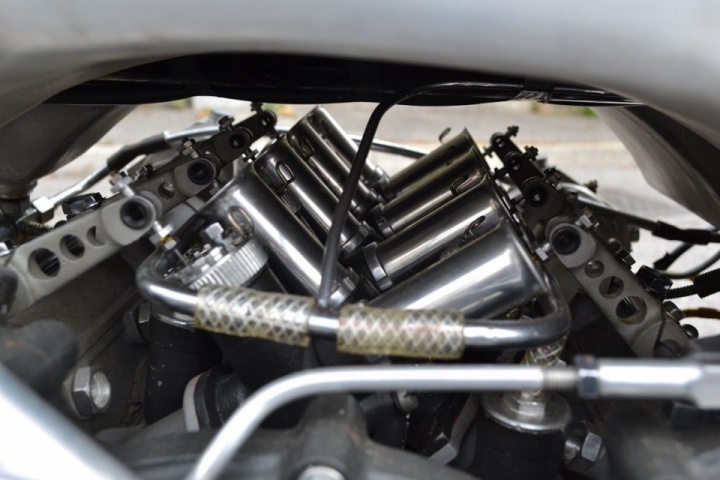
#MotoGuzzi #Custom #Bike #Moto








